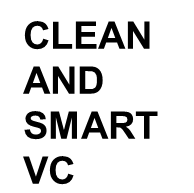The Internet of Energy Things (and Services) is taking shape
- By ssyc1
- July 5, 2016
- No Comments
The world is moving towards an “internet of energy things”, and it is bringing new players as well as changing the nature of the energy, energy effic iency and smart energy game.
iency and smart energy game.
A first piece of the picture arrived with the “smart meters” – these started taking off more than 5 years ago, first in the US, Europe, and Australia, and then especially in China (around 2010 and 2011). It opened up the possibility to collect energy related data from individual households and premises. A few years later, the massive adoption of the smart phone – which packed hundreds of sensors and functions in one single mobile mini-computer – kickstarted a broader “internet of things” wave; GE talked about an “industrial internet” where the “internet of things” is used to monitor and schedule jet engine maintenance, while Intel talked about the “internet of everything”.
A third piece of building block was the rapid decline in costs of solar PV; over 10% of US businesses use some form of on-site solar generation today, and it is growing (Walmart, for example, has committed to 100% renewable generation by 2020).
Fourth, and yes, the “internet of energy things” is about the “energy cloud” too – and the collection of massive amounts of energy related data and putting it in the cloud.
This “internet of energy things” in the making has 4 features that will shape how the world think about energy over the next 5 years:
#1. It is about distributed energy and distributed everything. Distributed energy – generating power on a micro scale and on-site – has really taken off in the last few years (Deloitte reports, for example, that 55% of large US businesses generate some portion of their electricity on-site, a growing trend across the last few years).
Growth has accelerated so much that 2018 is expected to be the year when the amount in GW (Gigawatt) of “distributed generation” will surpass that of “traditional generation”, on a global basis. Putting this alternatively – the clean, efficient, productive, automated, smart, “self-learning” cloud-based platform is putting pressure on and growing (and with its own growth dynamic) beyond the traditional centralized grid.
Even some of the “big guys” have come to the realization that everything is becoming “distributed”, connected, and therefore “de-materialised” (physical hardware morphing into software services): in the 4th quarter of 2015, for example, GE launched Current, a new energy efficiency and management services division as an independent unit. The first-wave energy efficiency and energy management companies are also adapting: Silver Spring Networks, for example, that used to be known as a smart meter systems company, is going big into smart and connected street light projects using mostly “as a service” models.
#2. Efficiency will be an important part of this internet. As companies face increasing options in their energy management, they are more able to measure energy use in real-time and therefore achieve energy efficiency goals, on its own, but mostly importantly by creating energy and equipment performance comparisons between a company’s various divisions, premises and outlets.
#3. Optimisation and managing the ups and downs of the generation of and the demand for energy will also be an important part of it. Power optimisers, for example, help solar PV systems avoid some of its “shading” problems; and only a few years after the first commercial “optimizer” products appeared in the market, we have seen it achieve 20% market share of all newly installed solar systems. The successful 2015 IPO of SolarEdge is just a reflection of this success – indeed SolarEdge’s growth is such that it looks to be in a position to challenge SMA as the world’s number 1 inverter supplier to the residential segment globally in 2016.
#4. Being connected is only the starting point, and yes the cloud is becoming an important part of the infrastructure (i.e. the basic starting point). But all of this point towards a key insight: what companies – sellers and buyers – can do because of this distributed connectivity is what will drive a lot of value.
The game of energy and energy things is changing. It is on the verge of a swing away from the traditional model. The established players who “get it” and effectively disrupt themselves internally will stay ahead of the game. There will be new players – the first-generation new players who started the disruption include names like Nest thermostat, O Power (recently acquired by Oracle), Silver Spring Network, SolarEdge and the like. The second-wave success stories are being crafted today.
Finally, as these new players continue to offer new services, and as old and new players alike reinvent established ways of doing things and integrate new ways with old, the “internet of energy things” will increasingly reflect that morphing of physical hardware into software services and effectively become an “internet of energy things and services”. It is adaptive, data-enabled, efficiency and optimization focused, and service-oriented, and performance-driven.






Leave a Reply